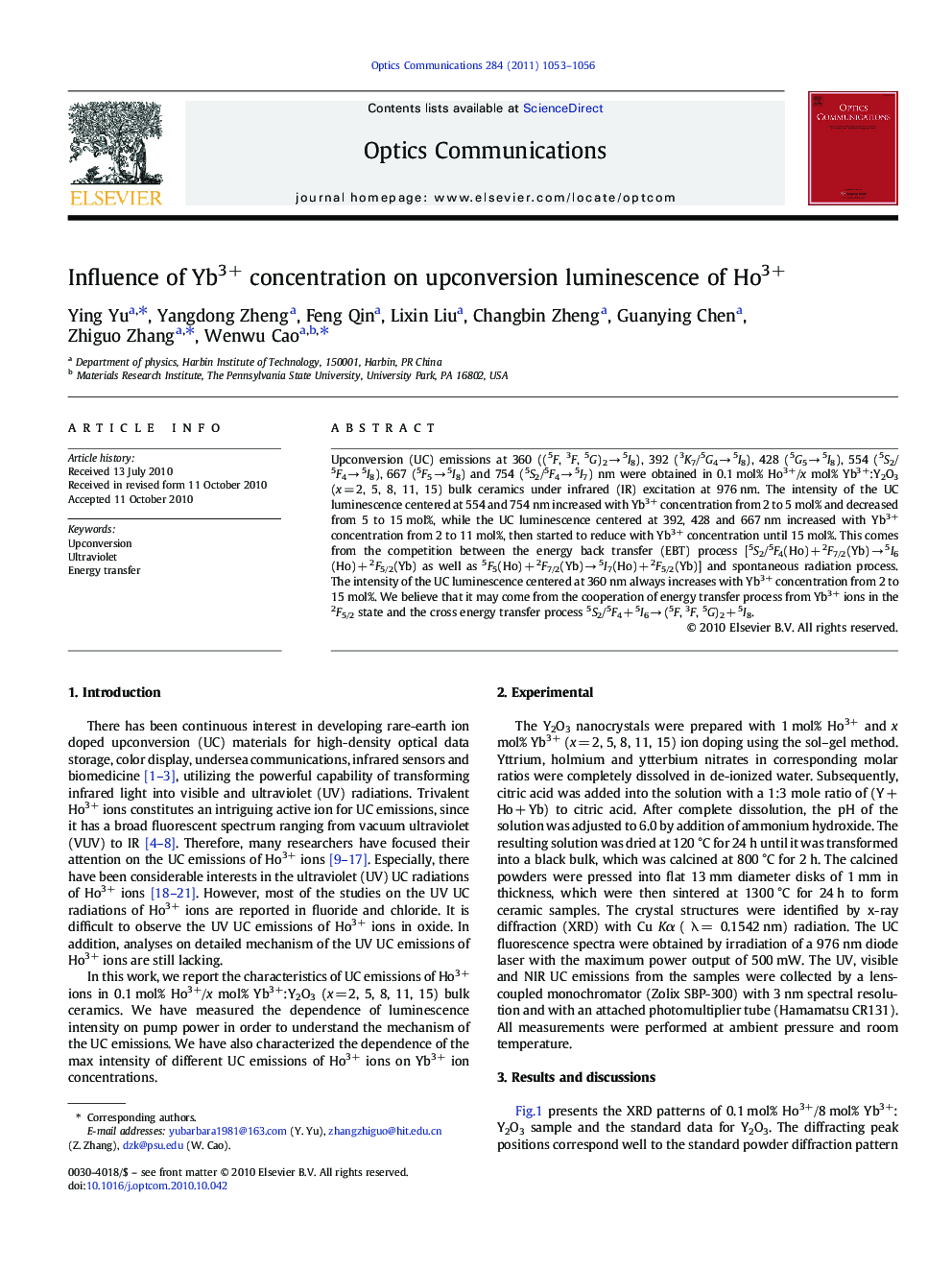| Article ID | Journal | Published Year | Pages | File Type |
|---|---|---|---|---|
| 1538008 | Optics Communications | 2011 | 4 Pages |
Upconversion (UC) emissions at 360 ((5F, 3F, 5G)2 → 5I8), 392 (3K7/5G4 → 5I8), 428 (5G5 → 5I8), 554 (5S2/5F4 → 5I8), 667 (5F5 → 5I8) and 754 (5S2/5F4 → 5I7) nm were obtained in 0.1 mol% Ho3+/x mol% Yb3+:Y2O3 (x = 2, 5, 8, 11, 15) bulk ceramics under infrared (IR) excitation at 976 nm. The intensity of the UC luminescence centered at 554 and 754 nm increased with Yb3+ concentration from 2 to 5 mol% and decreased from 5 to 15 mol%, while the UC luminescence centered at 392, 428 and 667 nm increased with Yb3+ concentration from 2 to 11 mol%, then started to reduce with Yb3+ concentration until 15 mol%. This comes from the competition between the energy back transfer (EBT) process [5S2/5F4(Ho) + 2F7/2(Yb) → 5I6(Ho) + 2F5/2(Yb) as well as 5F5(Ho) + 2F7/2(Yb) → 5I7(Ho) + 2F5/2(Yb)] and spontaneous radiation process. The intensity of the UC luminescence centered at 360 nm always increases with Yb3+ concentration from 2 to 15 mol%. We believe that it may come from the cooperation of energy transfer process from Yb3+ ions in the 2F5/2 state and the cross energy transfer process 5S2/5F4 + 5I6 → (5F, 3F, 5G)2 + 5I8.
Research Highlights►We observed that the intensity of the UC luminescence centered at 360 nm increased with Yb3+ concentration from 2 to 15 mol%. ►We also observed that the intensity of UC emissions centered at (554, 754) and (392, 428, 667) nm decreased when the Yb3+ ion concentrations are 5 and 11 mol%, respectively. ►Further increase the Yb3+ ion concentration can increase the intensity of the UV UC emission at 360 nm, and at the same time, decrease the intensity of other UC emissions.
